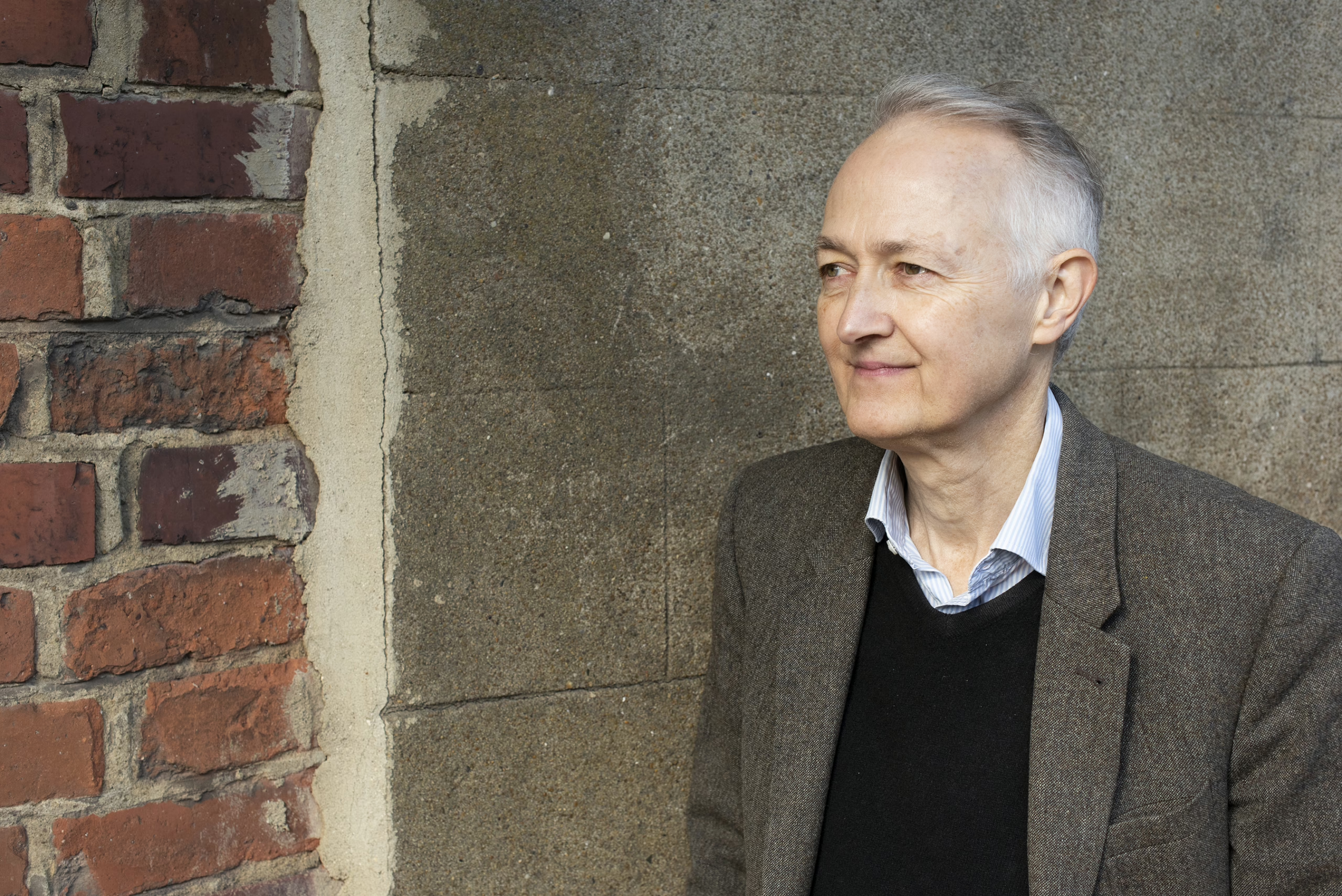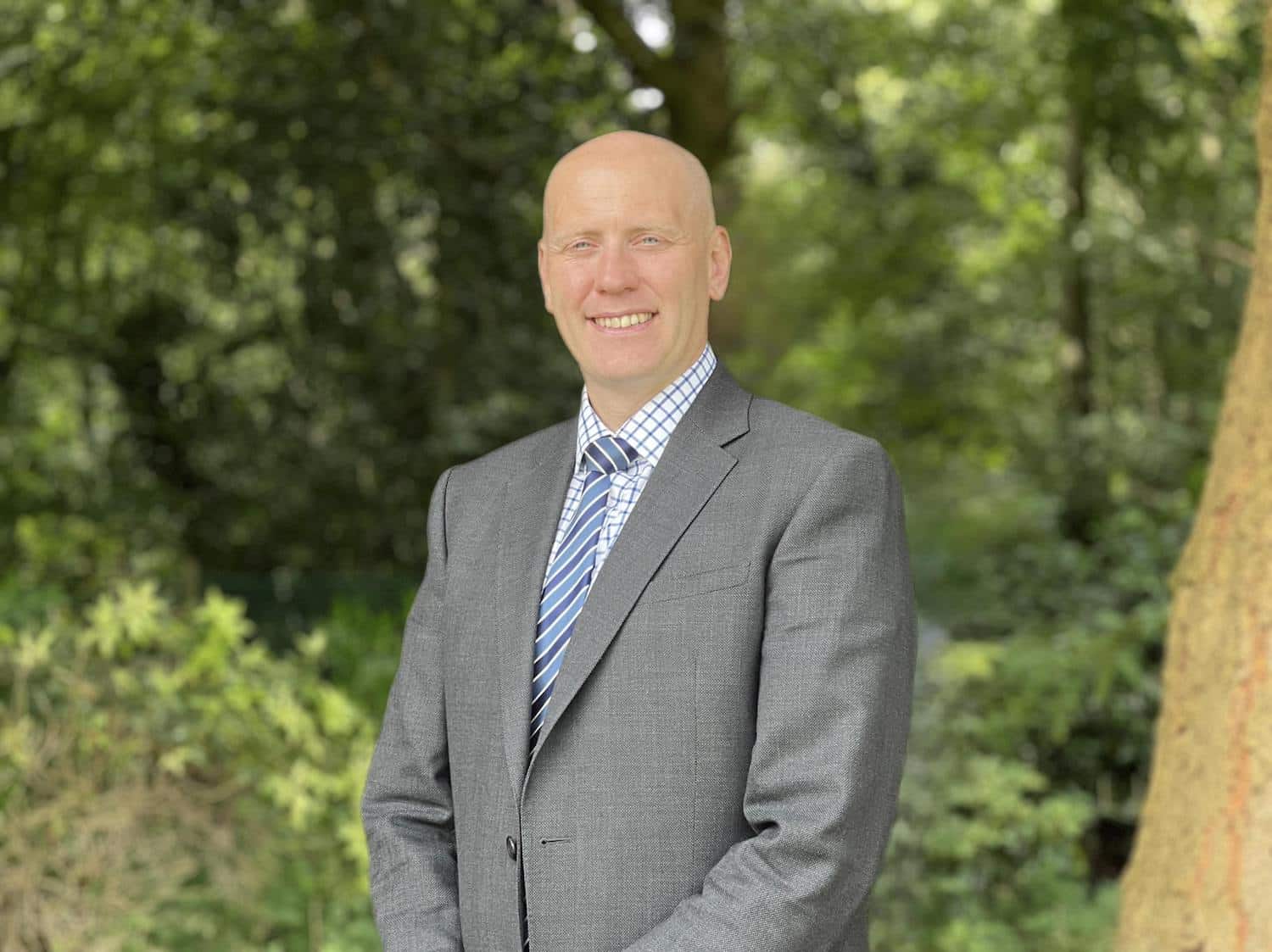Let’s go back to your school days, what are your memories of Stewart’s Melville College? Were there any teachers or moments that particularly inspired you?
My memories of Stewart’s Melville are generally very positive. I began my education at Daniel Stewart’s College when I was five. I particularly remember the modern primary classrooms at the time. I even recall writing on slates! The teaching staff were, for the most part, excellent. I was especially inspired by several of the science and mathematics teachers. Mr Gemmell Miller, a physics teacher who was later nationally recognised for his excellence, and my chemistry teacher, Dr Wilkinson, both had a profound impact. The mathematics department was also very strong.
A turning point came with the arrival of a new headmaster, Mr Bertie Bellis, who joined from The Leys School in Cambridge. He brought with him a clear vision and shifted the school’s focus towards maths and science, recruiting outstanding staff in those areas whilst maintaining the excellence in arts and humanities.
One teacher who stands out was Mr Tom Fraser, who joined when we were in S2. He taught the top English set all the way through to Higher level, and his thoughtful, open-minded approach left a lasting impression. He allowed us the freedom to explore related literature, in my case modern European novels in translation, as long as we were learning. I earned an A in Higher English, so his faith in me was well placed. He respected honesty and treated his students with maturity.
Did you always know you wanted to go into physics, or were there other subjects or career paths you considered while at school?
I was interested in several subjects, particularly English and History, and I considered degrees in Chemistry, Botany, and even Medicine. However, I was more drawn to the technical and technological aspects of these disciplines rather than patient care, so I ultimately chose not to pursue medicine.
Were you involved in any clubs, societies, or activities outside the classroom at Stewart’s Melville? How did those experiences shape you?
Yes, I took part in a range of activities. I played cricket, rugby, and also represented the school in chess. Our chess team was particularly strong, and we often competed against adult teams, though I remember one unusual fixture was cancelled because our opponents were based in Saughton Prison, and we weren’t allowed to go in!
I completed the Duke of Edinburgh Award as an alternative to the CCF, and I also studied the flute with an external teacher. I played some tennis for the school, although not very well. By the age of 14, many of my peers had outgrown me physically, and after witnessing a collarbone injury in rugby practice, I began to steer away from contact sports.
You studied physics at Edinburgh and went on to complete a PhD at UCL. What drew you to physics, and how did your early academic journey shape your interests?
I was drawn to both physics and chemistry. Thanks to the Scottish system was able to study mathematics, chemistry, and physics in my first year at university, which helped me narrow my interests. Edinburgh is an excellent university, and my academic environment, with both parents being university academics, made pursuing a PhD a natural step.
I received a great deal of advice encouraging me to broaden my academic experience, so I was pleased to receive a funded offer from UCL, which was highly recommended and gave me a valuable perspective beyond Edinburgh.
Your PhD research at CERN involved using a holographic bubble chamber. Can you explain what that means in simple terms, and what that experience was like?
My research took place during the final chapter of a once-pioneering particle detection technique. The bubble chamber used a superheated liquid, like a fizzy drink under pressure, that remained in a liquid state until triggered. When a charged particle passed through, it caused ionisation in the liquid, creating heat points that formed bubbles when the pressure was rapidly reduced. These bubbles traced the particle’s path.
To capture this in three dimensions, we used holography: recording the bubble paths with a laser-based technique that allowed us to combine a significant depth of field with high resolution. This cannot be done using conventional photography.
Although many PhD students spent extended periods at CERN, I commuted, as the experiment was nearing its end and I was also building a hologram replay machine back at UCL. CERN itself was extraordinary, fast-paced, filled with people working at all hours, and a place where Nobel laureates might drop into a seminar. Amidst the brutalist architecture, the site had rare orchids and even sheep grazing, an unusual yet inspiring setting for research.
What was it like working at CERN as a young researcher? Was it as exciting as it sounds?
It absolutely was. It’s an incredibly international environment. Although there are around 2,500 permanent staff, many are not physicists. Their roles include engineering, site management, fire services, and radiation protection. The research is largely carried out by roughly 4,000 visiting scientists on site any time. The intellectual atmosphere is unlike any other, especially compared to my earlier academic experience at Edinburgh.
After your PhD, you became a research fellow and then a lecturer. What did you enjoy most about combining research with teaching?
Teaching was a challenge, and that made it rewarding. It forced me to develop and improve. One of the most enjoyable aspects was the opportunity to bring elements of cutting-edge research into traditionally taught subjects, helping students see the real-world context and ongoing evolution of science. In some modules, I could even draw directly on my own research, which created a valuable connection between theory and application.
You went on to take up senior roles at Brunel University, including Deputy Head of School. What were your main responsibilities, and what did you find most rewarding in those leadership positions?
My first major leadership role was as Deputy Dean of the Faculty of Engineering, at a time when smaller physics departments across the UK were being merged or closed. Fortunately, as an applied physicist, my interdisciplinary background allowed me to continue teaching and researching across engineering subjects. I became a professor in 2005 and then took on responsibility for undergraduate studies across the faculty.
In 2016, I was appointed Head of the Department of Electronic and Electrical Engineering. It was a challenging time. The university needed to make significant financial savings, and balancing budgets without redundancies was difficult. I also oversaw the restructuring of our digital media group to focus more on technology rather than design.
One of the big challenges for institutions like Brunel is adapting quickly to shifts in student demand while still delivering relevant, research-led teaching. A partnership with Malaysia had brought many excellent students to our third and fourth years, but this ended abruptly when Brunel dropped in a league table, and funding was withdrawn. In academia, people understandably want to teach their areas of expertise, but one must also respond to market demands.
In 2019, you were appointed Professor of Physics at Queen Mary University of London and later served as Head of School. What were some of the challenges and highlights of leading a large academic department?
I took up the role in August 2019, just before the COVID-19 pandemic. Within months, we were forced to pivot entirely to online education. Labs closed, research halted, and we had to adapt overnight. It was a baptism of fire.
Another major task was leading the integration of the Chemistry department into Physics and Astronomy to form a new School of Physical and Chemical Sciences. It had to be done discreetly at first, and although there were challenges and concerns among staff, we’ve managed the transition carefully and collaboratively.
Queen Mary is in a relatively strong financial position, but complacency is dangerous. In London, competition from higher-ranked universities who have lowered entry requirements has had a real impact. Brand matters, and adapting to shifting student preferences is a constant challenge.
You were part of a team awarded a Laureate Breakthrough Prize in Fundamental Physics – congratulations! What was your role in the research that led to that award, and how did it feel to be recognised in such a prestigious way?
Thank you. I was one of many thousands of contributors to the four large experiments at the LHC. My work focused on calorimeters made from lead tungstate crystals, which emit flashes of light when particles pass through. We used photodetectors to measure these flashes and assess the energy transferred. I was involved in testing 16,000 of these devices and later in studying how they aged and performed.
My own research involved studying rare processes involving top quarks and Z bosons, helping to test and confirm theoretical predictions. Being part of such a large team means that recognition, like the Breakthrough Prize, is rare but especially meaningful because it acknowledges the collective effort, something that traditional prizes like the Nobel often cannot do.
For our students, could you give a brief, student-friendly explanation of what the Higgs boson is and why studying it matters?
It’s a tough one to explain, even Peter Higgs wasn’t keen on many of the analogies! In short, the Higgs boson is tied to a mechanism that gives mass to certain particles. Originally, the Standard Model of physics predicted some force carriers (like those involved in weak nuclear decay) should be massless, but experiments said otherwise.
The Higgs field helps resolve this by “giving” mass to these particles. It also gives certain particles mass (quarks & charged leptons e.g. electron) when they interact with it. The Higgs boson is a particle associated with the Higgs field, like the photon is associated with the electromagnetic field. Discovering the Higgs boson confirmed this theory and was a huge milestone. While the practical uses aren’t all clear yet, the knowledge fuels technological and scientific progress, just as past discoveries led to medical imaging or the internet.
Physics research sounds intense. How do you balance the demands of such a high-level academic career?
I’m not sure it’s more intense than other academic fields, but it does involve time-critical work, especially when experiments rely on access to major facilities. As I progressed, I had to learn how to manage time, people, and priorities. Knowing when to say no, and how, is essential.
Sometimes, stepping back is the key. I remember one project where we were stuck on an issue for days. I suggested we take a break, and during that pause, new ideas emerged. That kind of mental space is invaluable.
What do you enjoy doing outside of work? Any hobbies or interests that help you unwind or inspire you in other ways?
I’ve always had an interest in natural history as my father was a zoologist. I also enjoy photography, astronomy, and visiting art exhibitions. Classical music and concerts are also a source of joy, and I used to go hillwalking frequently. At university, I played badminton at Edinburgh and UCL. I’m not always good at switching off, but these interests help.
Looking back, what advice would you give your younger self at school and to today’s students at Stewart’s Melville who are passionate about science?
The most important thing is to follow your passion. I appreciate that today’s students and parents/carers often feel pressure to choose something vocational, but pursuing what excites you will lead to the most fulfilling path and often the most success. Physics graduates are highly employable. I’ve seen former students go into media, advertising, even manage hip hop artists, because physics teaches you how to think. Passion will sustain you far more than practicality alone.
Finally, what’s next for you? Are there any exciting projects or ideas on the horizon?
I’m approaching the later stages of my academic career, but I’m currently involved in an exciting collaboration on a proposed facility called LhARA, the Laser Hybrid Accelerator for Radiological Applications.
In radiotherapy, we understand the effects of radiation at very short and very long time scales, but not so much in the intermediate range i.e. seconds to hours. LhARA would allow us to vary how radiation doses are delivered, using precisely targeted, ultra-short or fractionated bursts of proton beams. This could maximise the destruction of cancerous tissue while sparing healthy cells. It’s a large collaboration involving more than 20 UK universities, charities, and international partners. We’re now seeking funding for the next phase.
Photo of Peter Hobson provided by fellow former pupil Peter Cattrell






